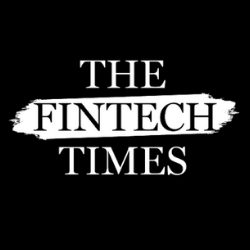In 2021, online retail trading reached record volumes of over $8billion globally, continuing an upward trend in volumes that began in the first quarter of 2020. The retail investment boom was a reaction to the market fluctuations caused by COVID-19, with a new generation of investors and traders looking to secure financial gains by trading online in stocks, cryptocurrency, and other assets. The outlook for 2022 is positive: retail investors continue to be highly active, with crypto at the forefront of the online retail trading market.
Joe Jowett co-founded StrikeX with the goal of producing simple blockchain-based products that allow individuals to invest easily and safely. His highly successful background as a trader and spirited community leader makes him the perfect candidate to innovate in building an ecosystem that puts the user’s needs first, and provide them with the most valuable and useful tools possible.
Speaking to The Fintech Times, Jowett explains why online retail trading is broken, and how it can be made fairer, safer, and more accessible through increased transparency, tokenisation of assets, and removing entry barriers to new traders:

However, for online retail trading to continue its surge in popularity in the long term, certain aspects of the sector need to be fixed. The infamous GameStop saga of January 2021 highlighted the failures of the current market, with young investors on Reddit creating a short squeeze by buying out GameStop stocks, and eventually organising the purchase of enough shares that short sellers closed with immense losses. Meanwhile, retail trading platforms restricted transactions of GameStop stocks. The market had underestimated everyday investors, and platforms reacted by severing the trust their users had in them. To regain that trust and build a better market, platforms must be more transparent with their users, adapt to users’ needs such as including tokenised asset trading, and empower their users to trade safely and responsibly.
The need for transparency
The ramifications of the GameStop saga meant that online trading platforms had to rebuild their reputation. By freezing trades, trading platforms were responsible for millions of investors losing money, and became the subject of numerous lawsuits. It is therefore vital that platforms operate transparently and securely to regain users’ trust. Done right, the use of blockchain technology offers the ability to do so more effectively than anything else.
Blockchain has many benefits, supporting decentralised peer-to-peer transactions that are lightning-quick, secure, and free from additional costs. By being instantly traceable, keeping an accessible information log, and encrypting sensitive information, blockchain is the future for transparency and security in trading, and one of the key reasons why trading in crypto and NFTs is so popular today.
Tokenised asset trading
Tokenisation, of which NFTs are an example, is an alternative to encrypting data. By tokenising assets, they become similarly secure, with tokens acting as a non-sensitive substitute for the actual assets. As the popularity of tokenisation is increasing, platforms that offer the ability to trade tokenised assets are becoming highly coveted.
Tokenisation brings all the benefits of blockchain technology into digitised assets ranging from commodities to stocks. Tokenised asset trading allows for faster, cheaper, and safer trading, while also opening up an unlimited market. Not only are markets always open and globally accessible, but platforms that offer tokenised asset trading can remove the need for multiple accounts on multiple platforms. Instead, tokenised asset trading allows for all assets to be traded on a single platform, providing that platform supports tokenisation.
Removing entry barriers
Offering accessibility for first-time users is an absolute must for these platforms. With the large influx of users over the last couple of years – 15 per cent of current retail investors began in 2020, with a median age of 31 – it is crucial that platforms adapt to be more user-friendly and easier to navigate, to attract further users and retain existing ones. Currently, many online trading platforms are confusing and overly complex, and offer little in the way of education for inexperienced traders.
Platforms that offer transparency, provide tokenised asset trading, and cater to novices as well as experienced users will be more likely to retain their user base, while trading platforms that do not adapt will be left behind. At StrikeX, we have listened to feedback on what users want out of their trading platforms. To offer a solution, we designed TradeStrike, our flagship platform which is due to be released in late 2022. TradeStrike will offer tokenised asset trading for crypto and other assets such as real estate and stocks on a single platform, utilising an intuitive user interface that aims to educate and empower traders.
As online retail trading becomes more prominent across younger generations, trading platforms must increase their appeal, fulfilling their user’s needs and providing trading that is fairer, safer, and more accessible. It is time to revolutionise the marketplace, so that it truly works for everyone who uses it.



